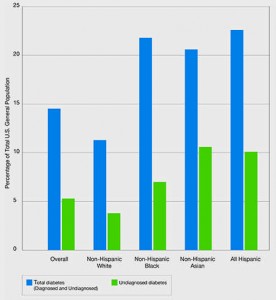 Noncommunicable diseases (NCDs) are the #1 cause of death in the world. NCDs are the yin to the yang of infectious diseases. Mortality from infectious disease has fallen as national economies have developed, while NCDs such as heart disease, respiratory disease, cancer, diabetes, and other NCDs are a growing burden.
Noncommunicable diseases (NCDs) are the #1 cause of death in the world. NCDs are the yin to the yang of infectious diseases. Mortality from infectious disease has fallen as national economies have developed, while NCDs such as heart disease, respiratory disease, cancer, diabetes, and other NCDs are a growing burden.
Health Affairs devotes its September 2015 issue to The Growing Burden of Noncommunicable Diseases, featuring research focusing both on global trends and U.S.-specific challenges.
 In their look into the relationships between NCDs, unhealthy lifestyles and country wealth, Thomas Bollyky et. al. note that NCDs aren’t only the “diseases of affluence,” of the rich. Key lifestyle risk factors, especially tobacco use, is epidemic in poorer countries, thus resulting in preventable heart disease, respiratory disease, and cancers that kill poor people at least as much as richer people. Bollyky and colleagues urge greater funding to poorer countries to ameliorate NCDs, with an eye on tobacco use and indoor air pollution (THINK: cook stoves that use biomass like animal dung, crop waste, and coal).
In their look into the relationships between NCDs, unhealthy lifestyles and country wealth, Thomas Bollyky et. al. note that NCDs aren’t only the “diseases of affluence,” of the rich. Key lifestyle risk factors, especially tobacco use, is epidemic in poorer countries, thus resulting in preventable heart disease, respiratory disease, and cancers that kill poor people at least as much as richer people. Bollyky and colleagues urge greater funding to poorer countries to ameliorate NCDs, with an eye on tobacco use and indoor air pollution (THINK: cook stoves that use biomass like animal dung, crop waste, and coal).
The top chart relates to the research published by Mohammed Ali and team from Emory University and the Imperial College London. This paper looks at 30 years of global data showing, overall, a mixed picture of mortality rates for heart disease (declining), diabetes (increasing), lung cancer (up for women), cervical cancer (declining), liver cancer (increasing), and stomach cancer (declining). In poorer countries, mortality rates of breast cancer and colon cancer were up.
Health Populi’s Hot Points: The research from Ali et. al. provides important context for considering the multi-factoral nature of NCDs. Consider obesity: weight-loss counseling would be fairly useless without a population’s ability to access dietary guidelines or healthy foods in a local community.
 In the U.S., of all NCDs, it’s diabetes that’s epidemic. In JAMA this week, Andy Menke and colleagues uncover the prevalence of diabetes among adults (>20 years) in the U.S. at 12% to 14%, with a higher prevalence among people who are non-Hispanic black, non-Hispanic Asian, and Hispanic. Diabetes is also under-diagnosed among one-half of Asian-Americans and just under one-half of Hispanics in the U.S.
In the U.S., of all NCDs, it’s diabetes that’s epidemic. In JAMA this week, Andy Menke and colleagues uncover the prevalence of diabetes among adults (>20 years) in the U.S. at 12% to 14%, with a higher prevalence among people who are non-Hispanic black, non-Hispanic Asian, and Hispanic. Diabetes is also under-diagnosed among one-half of Asian-Americans and just under one-half of Hispanics in the U.S.
Health Affairs offers a Renewed Prescription for ill health which ties well into the JAMA diabetes article: that is good old-school physical activity. David Tuller reviews the growing evidence linking better health to physical activity, noting a 2014 British Journal of Sports Medicine study that asserts, “Physical inactivity is a leading cause of death worldwide.”
“If [exercise] could be put in a pill,” the authors who represent the Exercise is Medicine program write, “it would be the most widely prescribed in the world.”






 Grateful to Gregg Malkary for inviting me to join his podcast
Grateful to Gregg Malkary for inviting me to join his podcast  This conversation with Lynn Hanessian, chief strategist at Edelman, rings truer in today's context than on the day we recorded it. We're
This conversation with Lynn Hanessian, chief strategist at Edelman, rings truer in today's context than on the day we recorded it. We're